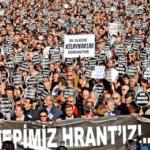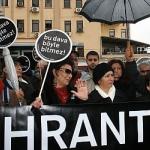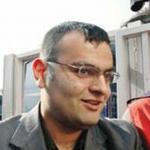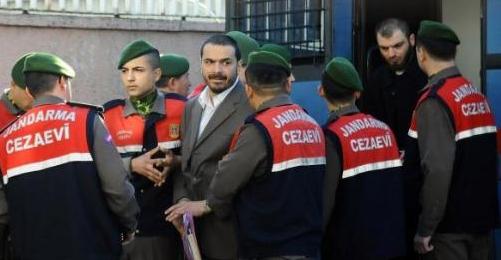Hrant Dink Murder Trial - Summary of Discrepancies
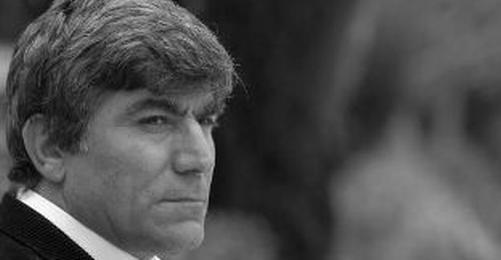
After the sentence of Ogün Samast to imprisonment of almost 23 years on charges of "premeditated murder" of Turkish-Armenian journalist Hrant Dink, attention has been redirected to the main trial.
Hrant Dink, founder and editor-in-chief of the Armenian Agos newspaper at the time, was killed on 19 January 2007 close to his office in Istanbul. At a press conference in Istanbul on Tuesday (26 July) the Friends of Hrant Platform and Fethiye Çetin, joint attorney of the Dink family, expounded their doubts related to the trial process and explained the indications that were dismissed by court despite their constantly reiterated demands in the course of the trial.
Lawyer Çetin said, "Hrant Dink was watched very closely by the state and he was killed by persons who again were very closely watched by the state. Everything is pointing to state institutions. It is blatantly obvious".
Çetin reminded what detained defendant Erhan Tuncel had said at the latest hearing: "Let us assure that this murder is being limited to three to five people". Tuncel also said that he was induced by the then Chief of the Istanbul Anti-Terror Branch, Selim Soykan, and the Istanbul Intelligence Branch Manager, Ahmet İlhan Güler, not to give a statement. "Public officials responsible for the collection of evidence persuade a suspect not to give his statement. How can such things happen?" Çetin criticized.
The lawyer announced that they wanted the investigation to be re-launched from scratch. Çetin drew attention to the following violations and irregularities that allegedly occurred in the context of the investigation.
* In Trabzon, the home town of convicted perpetrator Samast, a trial was only opened against Gendarmerie officers at the magistrate criminal court. No case was filed against the investigated police officers.
* No results could be retrieved from the investigation regarding the Istanbul Police.
* Two members of the National Intelligence Agency (MIT) were going to be investigated but it was put forward that the institution had no information at all about the assassination.
* When the police went to the home of Ogün Samast it was recorded that his father Ahment Samast answered the question on the whereabouts of his son by saying "Ask the gendarmerie commander, he knows". A correspondent investigation was not launched. It is known that the SIM cart of Samast's cell phone included a contact called "commander". Nevertheless, the court rejected the request for a related investigation.
* Osman Hayal, on trial for instigation to murder, was allegedly seen on footage of cameras in the district the murder was committed in on the day of the assassination. The court dismissed the request to review the base station records in order to confirm the allegations via Hayal's phone records. According to the case file, signals of Hayal's cell phone came from Istanbul from 13 January onwards and on the day of the murder the phone was shut down.
* The court accepted the demand for biometric photographs of Osman Hayal from the Trabzon Police. However, these pictures have not been provided until today. It is still unknown whether Hayal was in Trabzon or elsewhere.
* The MOBESE public cameras of the scene of crime are lost. The camera system of the nearby Yapı Kredi Bank Branch was claimed to be defective on 19 January, the day of the murder, and the previous day. The records of the camera installed at the facade of the nearby Akbank branch cannot be found. Lawyer Çetin criticized that the police did not ask for camera records from the Yapı Kredi Branch at first. She conveyed her opinion that the deficiencies and negligence related to the camera records occurred out of malevolence.
* The Telecommunication Communication Presidency (TİB) was requested to assist in the identification of the persons who were thought to be together with Samast as shown on the available footage. However, the request was dismissed since it was considered "contrary to the law". Instead, the names of these people were asked. Çetin underlined that the request in fact aimed at determining the identities of these people. She said that a list of conversations recorded by the base station in the region at a certain time slot on the day of the assassination was required.
* Samast spent a lot of time in an internet café close that was sort of hidden in the second story of a building close to the scene of crime. Lawyer Çetin claimed that the owner, Adem K., and the manager, his son Salih K., were policemen. She added that the internet café was opened in 2004 when the threats against Hrant Dink started to intensify and it was closed down shortly after the murder in 2007. Çetin recalled that the police did not investigate the café at all before the lawyer made a regarding request. She said that everybody was surprised by the details disclosed by Salih K. at court since he had initially stated not to remember anything. Çetin reminded that the witness had noticed the weapon carried by Samast and that he even informed the anti-terror unit. Salih K. also said that he went to the office of Agos newspaper to place an advertisement in the paper but the records of the paper show nothing about such an advertisement. Çetin underlined that no evidence had been collected about the written correspondence of Samast carried out from the computer in the internet café. The related criminal complaint against the police did not yield any result.
* Çetin mentioned that a decision for the confidentiality of an investigation was actually meant to provide proper progress. "The confidentiality of this investigation serves the police officers. It is being used to conceal and destroy evidence", she claimed.
The coming hearing of the trial is set for coming Friday (29 July). Lawyer Çetin called on the public for their support and emphasized the importance of the public interest in the process in order to keep it going. (ÖÖ/ŞA/VK)





